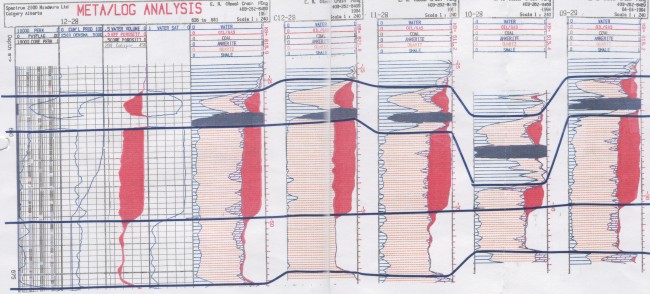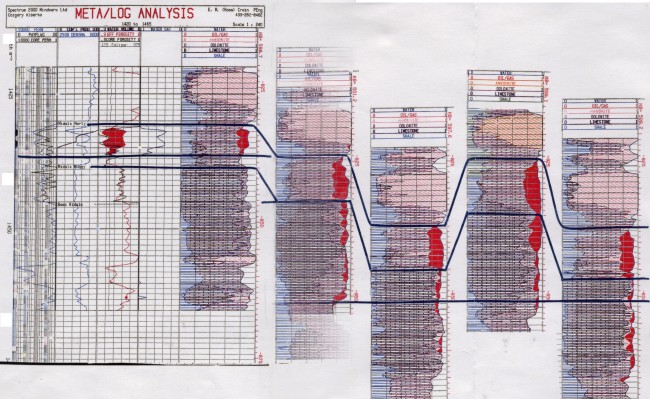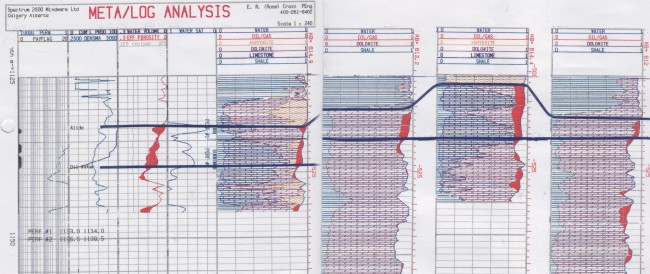|
 PROBLEMS WITH PERCEPTION
PROBLEMS WITH PERCEPTION
In many cases, horizontal wells
can overcome low productivity from vertical wells. An
extended reach well increases flow capacity by penetrating a
longer interval of reservoir rock, provided of course that
you stay inside the reservoir. If natural fractures are
present, aiming perpendicular to them will often improve
flow capacity, but not if the fractures also penetrate water
below the oil or gas above it. It's a 3-dimensional problem
and it needs to be understood before the well is planned in
detail. You ignore structure, stratigraphy, and fluid
contacts at your peril.
Petrophysical analysis can reduce
the risks of horizontal wells dramatically. Unfortunately, many such
analyses come too late and are merely post-mortem autopsies. I call
these projects forensic log analysis. a real whodunit detective
story usually unfolds.
In the three examples that follow,
the horizontal wells were planned because the vertical wells were
not producing as well as their neighbours. In all three cases, the
reservoir was thinner and lower structurally than those high
production neighbours. In all three cases, the horizontals were
economic failures and one was a complete write-off from the
beginning.
These projects date back about 30
years so the people and companies involved are long gone, so I
doubt anyone reading my commentary will be too embarrassed. The
wells shown are 0.5 to 1.0 mile apart.

The operator of the well second from the right compared his well
performance with his luckier neighbours and came up short.
Stratigraphic correlation looks pretty good but his structural
position is terrible, due to differential salt solution during and
after deposition. That coal bed was horizontal once. The common oil
water contact in the channel sand confirms the current structural
levels. He decided to drill the horizontal well anyway and
penetrated only the upper poor quality sand and the coal, never
touching the better sand below
the coal. This reduced the risk of penetrating water but the result
was dry hole. This cross section was made after the fact, and the
operator appeared completely surprised by the structural situation.

The complexity of carbonate lithology coupled with structural
concerns makes horizontal well planning a bit difficult. Same
operator, same problem as the previous example - his well at the
right is producing less than his neighbours, so let's do a
horizontal. It produced at a rate about the same as the original
vertical well and never made a positive cash flow. The zone is
thinner, lower porosity, and closer to the water, so it was a risk
at best, but fortunately not a total disaster. Note that the well at
far left is in a completely separate oil pool as the water contact is
quite different.

Yup. Same client, same problem, another post-mortem. His well is on
the right. You can write the prognosis yourself. The zone is thin
and low porosity, sitting on higher porosity water. What did you
expect to happen? Again, the well on the left is in a separate oil
pool.
|

